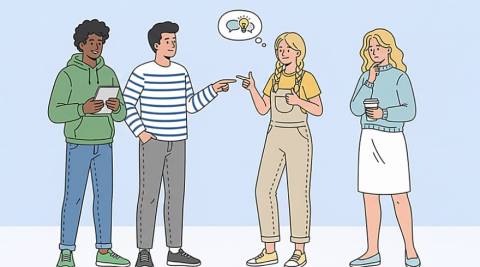
Why Communication Styles Matter More Than We Think
Across cultures and contexts, professionals often map their approach to dialogue using communication styles as a practical shorthand. By naming observable tendencies, people can examine tone, cadence, directness, and emotional expression with less defensiveness. The vocabulary enables neutral discussion of interpersonal dynamics, improving feel like a shared experiment rather than a critique. That shared language then supports feedback that is specific, respectful, and useful.

Instead of assuming everyone speaks the same way, it helps to notice how different styles of communication shape tone, pacing, and word choice. Some people value brevity, others prefer storytelling, and many situationally blend both. Clarity emerges when we surface expectations: How much detail is enough? Which channel fits the goal? What timing supports follow‑through? When conflict arises, shared ground emerges faster when communication preferences are acknowledged and negotiated.
Flex Your Communication Style
Clarity grows when we separate the message from the method we choose to deliver it. Tone, structure, and timing interact with context to either amplify or muddy meaning. In practice, a communication style blends behavioral cues, intentions, and norms. Because those elements shift across settings, adaptability becomes as valuable as consistency. Coaching, peer feedback, and structured reflection can help people flex without losing their voice.

Communication Styles Test: Core Dimensions & Benefits
Comparative research catalogs several types of communication styles to simplify observation and coaching. Rather than boxing people in, these categories function like a compass that points to likely strengths and typical pitfalls. Teams deliver faster when effective communication styles are modeled by managers and peers. The result is crisper alignment, shorter cycles of rework, and less emotional wear and tear.
| Dimension | What to Watch | Practical Benefit |
|---|---|---|
| Directness | Concrete requests, clear ownership, concise phrasing | Faster decisions and fewer ambiguities |
| Warmth | Empathy markers, validation, and inclusive language | Higher psychological safety and openness |
| Pacing | Talk‑to‑listen ratio, pause usage, turn‑taking | Balanced participation and better synthesis |
| Structure | Headlines first, framing, and signposting of points | Stronger comprehension and recall |
Understanding the 4 Types of Communication Styles
Most people can recognize recurring patterns in how they and others speak up, ask questions, or hold back. Many textbooks summarize the landscape as the 4 types of communication styles, giving novices an easy starting map. That framework often highlights assertive, passive, aggressive, and mixed tendencies, each with benefits and trade‑offs. Knowing the markers helps you respond strategically in the moment, rather than reacting impulsively or withdrawing.

A notable risk appears when the passive-aggressive communication style is rewarded, because trust erodes. Indirect jabs, silence that masks disagreement, and delayed follow‑through create invisible costs that compound. Countermeasures include naming patterns gently, requesting explicit commitments, and offering safer channels for candid input. Over time, transparency beats cleverness, and consistent boundaries beat sporadic confrontation. Before changing habits, a brief communication style assessment clarifies blind spots and strengths. Self‑reports can be complemented by 360 feedback, conversation reviews, and meeting recordings for a richer perspective.
Match Style to Role
Context determines which approach works best, and expectations vary by industry, culture, and power distance. Career momentum often hinges on how communication styles workplace align with role expectations and power dynamics. Specialists may need more detail and fewer metaphors, while executives want crisp insights tied to decisions and risk. Calibrating to the audience saves time and reduces the need for rework.

Different Communication Styles for Leaders
Outside the office, harmony improves when communication styles in relationships are recognized and respected. Couples and friends benefit from rituals that make space for curiosity, reflection, and repair after friction. Small practices like summarizing what you heard before replying create disproportionate gains in closeness and resilience. The same mindset transfers to community groups and volunteer teams.
Executives who model adaptive leadership communication styles set the tone for psychologically safe debate. Leaders who narrate their reasoning, invite dissent, and distinguish brainstorming from decision time help others contribute wisely. By showing when to be brief and when to explore, they reduce anxiety and increase ownership. The ripple effect is a culture where information flows to where it is needed most.

Learn, Practice, Communicate Better
Skill grows through deliberate practice, not just good intentions. For rapid progress, structured communication style training offers practice, feedback, and accountability. Role‑plays, scenario drills, and calibrated feedback loops help people stress‑test new habits safely. Repetition under varied conditions builds automaticity, so better choices show up even under pressure.
Long‑term mastery depends on a deeper understanding of communication styles built through reflection, journaling, and coaching. Tracking tough moments and deconstructing what helped or hurt creates high‑fidelity learning. Over months, small upgrades in listening, framing, and signaling accumulate into big gains in credibility and rapport. Peers who grow together reinforce consistency. A quick diagnostic, like a communication style quiz can spark curiosity and guide next steps. Follow the snapshot with a specific plan: one behavior to start, one to stop, and one to continue. Share the plan with a colleague who will hold you to it, and revisit progress after real meetings. Tiny, observable commitments beat vague aspirations every time.
Frequently Asked Questions
The Latest News



Please Note
This website (communicationstylestest.com) is not an official representative, creator or developer of this application, or product. All the copyrighted materials belong to their respective owners. All the content on this website is used for educational and informative purposes only.
